Building the Future of HR with AI: A Chat with Jeff Kirk
In this episode, Don and Sharon talk with bswift’s VP of AI Jeff Kirk about how artificial intelligence (AI) will transform the workplace and the employee benefits space. Jeff shares his career journey from the early days of the internet to pivotal roles like working on Amazon’s Alexa team. Tune in for thought-provoking perspectives on developing AI responsibly while transforming work. Jeff offers a roadmap for how AI can act as a copilot that empowers employers and enhances experiences for customers and employees alike.
LISTEN ON SPOTIFY LISTEN ON APPLE PODCASTS LISTEN ON IHEARTRADIO
Well Sharon, we have a great guest with us today. Jeff Kirk is a recently minted new Vice President on our product team. He’s a specialist at bswift in artificial intelligence, and Jeff comes to us after a long career in specialty technologies. He started his career, spent several years with Rosetta, and then a few years at Razorfish, and then he became the founder and CEO of a company called Moonshot that was acquired by Pactera Digital. And we’re going to learn a little bit more about that maybe from Jeff in a few minutes. But he then spent some time on the Alexa team at Amazon, and now he’s a proud member of bswift and we’re delighted to have him. And we’re seeing tremendous advances in bswift’s usage and strategy around artificial intelligence. So Jeff, welcome to the show today.
Thank you, Don. I’m happy to be here today.
Great. Well, maybe you could, to get us started, Jeff, will you take us on a quick spin through your career path and help us understand how you became an authority on leveraging artificial intelligence?
I’d be happy to do that. So the way I think about my career is that it’s closely aligned with what I like to call the various phases of the internet as it’s developed over time. I’ve had the opportunity to have a role in the early computing days as a young child and as a student. I had access to computing resources due to my family’s access to things like early PCs and the spreadsheet, which was really the driver of the emergence of the PC adoption era. Through that process, I became very familiar at a very early age with computer programming and fell in love with that. So as I started my career, I was very focused on the business value of computer programming. And in the nineties and early 2000s, the internet as we look back on it, was in this moment that we’d like to think of as the systems of record phase of the internet.
This was all of the enterprises and companies spending their resources on implementing large enterprise resource planning systems, ERPs. And it really set the foundation for what computing could do for the next several decades. Everything was digitized, concepts like how to define an object or a physical thing in the world were ultimately created with various types of metadata. And that metadata was stored in systems. And ultimately we learned how to transact on top of that in new ways. And so as we entered the two thousands, we were very focused on adding e-commerce and content management. And as mobile came online, those types of applications. And so as I started my professional career, I was in an enterprise setting as a consultant where I was given access to ERP systems and given projects to expose that financial information or inventory information through new channels such as content management systems to unlock value for enterprise users or their customers.
And then we led that to e-commerce capabilities. So how do you then generate revenue through exposing that information online? And ultimately that led to new channels, whether that be through the web or mobile applications as iPhone and Android became popular. And so I was always on this kind of bleeding edge of the next thing related to the internet. And so as we transitioned from the systems of record to what I like to think of as the kind of content commerce mobile or systems of engagement phase of the internet, it was very focused on how do you now optimize experiences for customers? How do you drive business efficiency and value leveraging new ideas around customer engagement, customer acquisition? And so I had an opportunity to build some of the largest e-commerce and content management systems in the world for very well-known brands in the United States as well as internationally.
As I worked at Razorfish, we were a very large agency, which had relationships with some of the most iconic brands in the world and had a chance to build the solutions for their e-commerce and content systems. So it was a very, very exciting time. And as the systems of engagement phase in the mid two thousands began to stabilize and become widely adopted, I started to think about where this was going. And at the time, data was a big topic in the space. So we were collecting all this data from engagement and customer behaviors in these channels. And I think the phrase data is the new oil was coined and people were trying to figure out what to do with it. And I was really interested in that, and I was so interested in it. I decided that I was going to start a company that was called Moonshot that was really, it was a consultancy, and it really was focused on creating very lovable customer experiences that were highly focused on using data to create new types of experiences for brands.
And so I founded that company in Chicago. It was a really great success for me both professionally and personally just from a growth perspective as well as an ability to give very talented people their next steps in their career tracks and grow as individuals. I’m really proud of what we did as a team there. And ultimately that led me down the path to joining Amazon eventually, where some of the work I did at Moonshot was focused on the voice channel, so voice experiences and voice AI. And the Alexa product had launched in 2014, and we were doing voice implementations that moonshot for customers. And so I had a chance to really explore what voice meant for enterprises and their customers. And that led me down the path of actually joining Amazon after I had exited Moonshot. And so on the Amazon team, it was really a great journey. I had a chance to expand the reach of Alexa to many countries and add many new customers to the platform. And so we’re really proud of the work we did there. And so that’s what’s led me to this new systems of intelligence phase of the internet that we’re in now where we have these new emerging machine learning and AI capabilities. And I’m excited to be talking about it today with you.
I love that. Well, one of the things you mentioned, Jeff, is the power of voice. And we are big fans of the power of audio here as a podcast, right? No one sees our faces. So yeah, owed to that, but you’ve referenced the early years of computing technology and you’ve had the benefit of growing your career in this space since very early on in the beginning. And so you’ve seen the logic change over several years. What would you say is the leap forward that we’ve made from traditional computing execution of transactions to AI and how do you define AI?
Yeah, so I mean artificial intelligence, I mean it’s fascinating field of computer science. We basically are focusing on creating intelligent machines that can mimic cognitive functions and perform complex tasks autonomously. And so it’s a completely new field of computing new in the sense that it’s for the first time kind of emerging into the customer space. AI goes way back on top of machine learning, which has been working on for decades from a research perspective and some of the first convolutional neural networks that able to recognize handwriting from imagery and identify and turn that into text so that computers could work on it. It was all done 20, 30 years ago, and a lot of it was done in the research area where it hadn’t been commercialized yet. And as of the last couple of years now, we’re finally seeing the emergence of AI capabilities to the customer.
And now we’re kind of all getting a sense of what this means for the future of computing and how we partner with computers, how we interact and create new ideas together. And truly giving you somewhat of a partner in your field of expertise that allows you to move forward. And your question was really about how does it differ from traditional computing? And I would say that traditional computing, the logic follows a predefined set of instructions or algorithms. It’s very rule-based, not as maybe adaptable. And it’s very much based on pattern recognition where ai with machine learning, we’re able to effectively learn from data that we provide to our machine learning and AI models, and those systems can analyze those patterns and trends and relationships and then make predictions to improve over time. And so the fundamentals of decision-making and the processing of that information is significantly different than what would be the rule-based structure of traditional computing that we’ve been working in.
That’s fascinating, Jeff. So I think we’re all probably aware that there is, as AI becomes more ubiquitous to the consumer, there is an increasing concern among some people, maybe even some government entities, some business entities and so on about the usage of ai. And what comes to my mind is sort of what floats around the popular consciousness, things like how from the movie 2001, a Space Odyssey or robocop, Terminator, blade Runner and so on. So I wonder from in your opinion, what is the real concern around AI usage today? Is it that machines are going to get so smart, they’re going to take over the world and enslave us all? I’m just kidding. Or is it more like are we worried about what some people are going to use those machines in that technology to do that might not be great for people or help us understand where the concerns lie?
Yeah, I think the concerns have been popularized in a couple of areas. First and foremost, there’s this general concern about AI overtaking humans. And I think that concern, while valid and probably a far future concern, is not necessarily something that is, I think at the forefront of a lot of people’s minds at the moment. It’s probably more of like you would classify that as something like fear, uncertainty and doubt, where there’s a new technology, there are safety concerns about it, and some people have taken that to the extreme that it’s going to be an existential threat to the human society. I don’t think we’re there yet. And we’re really, in the very early days of AI’s capabilities, it hasn’t been connected to critical systems, things like weapons systems, at least at a popularized level. And so at the end of the day, I don’t think that we have to worry about it overtaking humans at the moment, but there are concerns around the misuse of AI by humans, and specifically in the areas of I think surveillance and privacy, whether that be an AI powered surveillance system invading privacy and enabling mass monitoring of a population obviously that in fracs on certain civil liberties.
And so we want to be cognizant of that. And obviously there’s the thread of connecting it to autonomous weapons systems or creating certain types of biases and discrimination in decision-making processes. And then probably one that’s most relevant now is just even job displacement. It’s like if we have the ability to automate certain types of jobs, does that lead to significant job losses and then the downstream impact of that, which is raising economic and social concerns. So there is a misuse concern, and I think that’s valid. But again, we’re very early in the days, and I think that the commercial entities that are building these capabilities, they are using responsible AI concepts and philosophies around how to ensure that there’s safety and ethical concerns built into how these artificial intelligence models and specifically the large language models are operating at the moment. And I think that covers off on those ethical and social impacts for the present time.
And then maybe down the road, the governments, they may need to regulate certain capabilities of the AI models. We may need to have agreements between governments about the openness of how the AI models are working and how they’re developed so that there is some transparency into the decision-making process that these machines are making. But I think these are all areas that will get resolved in the long run. And in the meantime, we’re really using them to be more creative, create ideas, help us with our jobs, help us with the mundane tasks of the day-to-day. A writer might be using artificial intelligence right now to write paragraphs to fill their stories, or software engineers might be using artificial intelligence to write some of the repeatable code that used to take up a large time in their day. And so I think there’s a lot of efficiencies to be gained here in the early days.
Yeah, absolutely. And one of the things that bswift has really framed up as it relates to our philosophy around AI is that we want to use AI mindfully, and we want to use it to help people, help people to give them better tools and resources to do their jobs better. And I think that approach kind of helps eliminate some of the fud, the fear, uncertainty, and doubt associated with ai. But I can definitely appreciate where as this evolves, there may need to be some intervention down the line. But I wanted to pivot a little bit because Jeff, you did a presentation for Disrupt HR in May of 2024 this year, and you highlighted two key challenges that organizations face with AI when they do decide to deploy ai. And the first challenge that you highlighted was how do they move from experimentation to enabling AI for true business transformation? And then secondly, how do you reimagine jobs to be more human centric in an AI driven future? And I would love it if you could elaborate for us on how leaders should be thinking about those two challenges. How do they bridge the gap between experimenting with these AI tools and then realizing a full potential of deploying AI within their business while also making sure that they’re sewing in the human element?
Yeah, it was a great experience to speak at Disrupt HR. It’s always fun to be creative. And I think the way I set that conversation up was to give an example of any worker who is settled in for the evening on some kind of a system or new product launch, whether it be a marketing product or a technology product where maybe it doesn’t go exactly as planned during the rollout of the new product. And well, what do you do about that and how do you potentially safeguard yourself in the future to make things more efficient and enroll as needed? And so I think that the idea of these AI copilots, Microsoft has kind of coined the commercial term copilot for their product, but it’s like a really interesting concept where you’re able to effectively partner and share ideas with an AI agent to kind of validate plans or validate new concepts and get some realtime feedback using kind of a corpus of knowledge that’s been gathered from the internet.
So you can kind of get a sense of if someone dealt with a challenge like this in the past, what have they done about it and how might you be able to build on top of that knowledge versus starting from scratch? And if you look at the data that’s available to us right now, Microsoft had just done a study that it was called the 2024 Work Trend Index annual report. And what they had found through a survey was that 75% of people are already using AI at work, and 46% of those started using it less than six months ago, which would be the very end of 2023. And so there’s a tremendous uptake about AI inside of enterprises, and it’s really powered by the workers. And when you actually look at those percentages, how are they getting access to AI? They’re actually bringing it on their own devices.
And so they’re bringing their own ai, BYO AI. And so what you do about that as a manager or an executive of a business, and what you really need to start thinking about is how do you ultimately start to drive some value for your business knowing that these new behaviors are emerging inside of your workforce? I think that some of the numbers that I had referenced in that Disrupt conversation were that it was like power users in your organization. These are people that maybe are more of the bleeding edge adopters. They’re really familiar with AI, and they’re using it at work at least several times a week and saving more than 30 minutes a day. And so it’s paying off. And so if you can effectively figure out a way to boost your creativity, make your workload more manageable, you can actually focus more on the important work at hand.
It’s like the real subject matter expertise, the field that you’ve become an expert in, you can apply that more often versus having to do the mundane email follow-ups, how to design a webpage, you name it. There’s all kinds of things you can do within your day then that you free up if you can free some time. And so it’s been a fascinating way of looking at how do you transform your organization to make it more friendly to AI knowing that employees are already using it. And what you find is that if you don’t let employees use AI at work, they’re less to be interested in working for you. And so one of the imperatives for management is to figure out a way to empower your employees to use AI in their job because you actually are more threatened to lose those employees over not empowering them. And so you have to come up with some strategies for maintaining your workforce through the use of ai, otherwise you have some issues on your hands. Did that answer your question?
Yeah, that was wonderful, Jeff. Thank you. And as I think about what you’ve said about the usage of AI in the workplace, it brings to my mind the question you’ve raised around the traditional 40 hour work week. And I wonder if you’d share your thoughts on what you see as a future model of work.
Well, ideally you would just wake up and go golfing in the morning and then come home.
The AI would do everything, right?
No, I think it’s more about, it’s truly about having, in this phase that we’re in right now, it’s about having this partnership, this emerging partnership where when you arrive at your desk in the morning independent of where your desk is, you’re able to check in with a series of tasks that you want to work on for that day. And instead of potentially bringing the tasks to the table, those tasks are brought to you by your agent. It generally is looking out into the future or back into the past based on what is due or what kinds of projects and decisions are needing to be made. And it’s offering those as a already prioritized list of work that you really need to be thinking about to meet deadlines, to meet customer requests, or to build something new. And so if you think about it from an ability to operate more efficiently, it’s helping you plan your day, and then as you get into the work, it’s also most likely offering you starting points or idea starters around how to tackle a certain problem.
Maybe you’re putting together a customer proposal in a sales environment and you have a large repository of past proposals that have been successfully executed and ultimately ended up as wins for your business. And so the agent, the AI agent, is able to understand the concepts or the included content inside of those winning proposals and offer those as starting points for a similar type of company. And doing some of that similarity comparison and those types of capabilities are very much in the wheelhouse of AI right now where instead of us having to go back and look through copious records and just slides and slides and PowerPoint presentations, we’re able to have it summarize a lot of that and give us a starting point of what might be successful in the day-to-day. And so I think there’s this idea of having this copilot sitting next to you that when you need it, it’s able to help you fill the gaps and maybe look ahead, make more intelligent decisions about where you’re taking the business, depending on what role you’re in, and ultimately giving you a much greater command of the creativity that you’re putting into your job on a day-to-day basis.
Yeah. So Jeff, we have I on.
Sorry about that. Yeah.
Do you want to jump in, Sharon?
Sorry, I was tripping over. I still have to get off mute here. Oh, shoot. Lost my train of thought. Yeah, so what I was going to say is we all have a lot going on, and so I think this application that you’ve just referenced is helpful not only on a micro scale at the individual employee level, helping us stack rank what are the priorities, what do I have floating around an email that I may have forgotten about. We have tools and resources and ERPs and places to put that data, but we’re all human and we all have a lot going on, and that lives in email. And so to have a copilot to elevate those certain priorities and then bring data to the table so that we don’t have to recreate the wheel is I think super impactful. And then on a macro level for business leaders and decision makers to be able to take things in from that copilot and look at things in aggregate and drive some creativity and bring different perspectives rather than, again, going through dozens of decks and recreating the wheel and the conversation.
It’s an efficiency play and a micro level and a macro level. So I love what you’ve said there about that, and hopefully it does help with a 40 hour workweek, right? Of course, the more efficient you can be, the better use of time. So speaking of people being pretty busy, we have been really busy at Bswift coming out with some new applications of AI and Emma co-pilot is one of those tools that we’ve deployed. I’d love it if you could walk us through that recent update that we have delivered internally to help deliver a more positive experience for our bswift customers and their employees.
Sure. So Emma Copilot represents the next generation of our ability to service customers when they need answers from bswift related to their relationship with our company and their benefits. And it’s really inspired around making benefits better for everyone. And so the copilot is really an AI agent that is connected to something that we call a knowledge base. It’s an expert knowledge base that contains a host of data sources. This is content about how to resolve certain types of situations that a customer may find themselves in, whether that be related to a life event or some sort of new change related to their benefits. And this knowledge base is surfaced to our customer service center through a chat like experience that is also connected to the audio stream from the phone call that the customer may be coming in from. So the experience ultimately unfolds by a phone call being placed to our customer service center, the agent picking up that phone call and immediately getting a 360 view of that customer’s profile.
And in real time, as the customer is speaking, our copilot technology is using automated speech recognition to effectively convert that dialogue into text, which can then be effectively used to query our knowledge base on behalf of the customer service rep That gives them certain categories of answers depending on what the automated speech recognition is decoding from that phone call. And so this one, it allows the customer service rep to focus more in on the actual conversation with the customer versus trying to then query and search for information. Most of the information is successfully presented very similar to a Google search result where the top records are given to the customer service rep, and a lot of times they’re able to satisfy and resolve the customer issue in a very quick order. Using this new technology, we’re also able to then at the end of a phone call with the customer, we’re able to summarize that call using the AI capabilities inside of copilot.
And so by being able to retrieve knowledge that’s applicable to that situation and then also summarize that call, it allows us to continue to build a model that we understand as a relationship with that customer so that the next time we have an interaction with that customer, whether that be through a phone call or one of our digital channels, we’re able to create that 360 degree view of that customer and ultimately will allow us to create new types of experiences down the road that we believe will make that customer journey even more successful for the customer and be swift,
Such a positive experience for both the employee and the service center agent. Right, because we’re asking so much of the servant center agent what benefits is a challenging, it’s challenging. There’s a lot of data, there are a lot of different benefits, there’s really dense documentation that is great, but a lot to sift through. And so again, back to using this technology to help people help people, that’s exactly what this is able to do. And I love that it’s helping our service center agents be more efficient. And then it’s great for the employee, right? Because to your point, we’re setting the stage for future engagements, but we’re also being efficient with their time as well. You think about someone calling during annual enrollment, maybe they’re calling over their lunch break and they don’t necessarily want to be on the phone for an hour as we sift through all of these SPDs, right? They want to call and speak with a human being who can help them with the right information. And that is exactly what this kind of technology is enabling us to do. So I think that’s just incredible work that we’re doing. I’d be curious what excites you the most as it relates to future development and Emma with ai?
On the Emma front, we’re really excited about getting closer to the customer. So what does that mean? We want to understand our customer’s needs in a digital capacity more consistently and in a much deeper manner. And so what that means is we’re going to be using our experiences and our interactions with our customers to better inform how to really truly make our journeys with them very lovable from a customer perspective. And so we’re going to try to make our interviews, whether that be, if you’re enrolling for benefits, we’re going to make those more efficient so you spend less time in that interview, we’re going to make them more precise to make sure that you’re getting a right plan recommendation at the right time. And ultimately, we’re going to try to follow up on a lot of that so that over time as you are experiencing your benefits, maybe you’re made aware of whether that be point solutions or other types of benefits related topics that may be applicable to you and your family’s situation. And you may just not have had an opportunity through your benefits experience to ever know that certain capabilities existed. And so we just hope to lean into those customer relationships and make that a much more rewarding experience for them and empower them with some more knowledge about their general ability to use their benefits.
Jeff, our customers fall into a couple of different buckets. So we would say our customers are the plan sponsors, which are often represented by the HR administrators that use our system, but also the end employees that use bswift to enroll for their benefits. Hopefully we’re touching every one of those employees on a regular basis. And our customers, Sharon and I, are close to them and we hear a lot of feedback, and there’s a great deal of excitement among our customers right now with the advances that we’re making at bswift in terms of AI and the tools. So some of the stuff that’s already been delivered, like the copilot that you just described, one of the things that’s so exciting about it is it’s making the experience with the customer more efficient, and that’s allowing that call center rep that’s sitting in that chair to pay very close attention to the customer’s needs and not have to worry about doing a lot of the stuff that they have to do to take notes and prepare for summaries of the call, like the machines do, doing all that work for them so they can really be more engaged with that consumer.
And that’s a huge positive. We’re dealing with a lot of system administrators too, and as we roll out more of these tools that will allow them to do internal administrative tasks more efficiently, build sites more quickly, get information into bswift more efficiently, that’s all wonderful news, and we’re just so excited for all the work that you and the team are doing for us. Jeff, thank you for that.
No problem. Yeah, and I’d like to make a comment too, for the system administrators, we also view that the Emma ecosystem that we’re building ultimately will empower them to make decisions based on a tremendous amount of information available to how their employees are interacting with our recommendations and the types of plans they’re selecting. And through advanced analytics and predictive capabilities will offer our systems administrators with increased capabilities to understand how their benefits programs are performing through the bswift systems. And so we’re really excited about that future as we roll that out so that we do give both employees and the administrators a new type of experience.
Well, Jeff, this has been a great discussion. You’ve shed a lot of light for us on what’s happening in artificial intelligence these days, and particular how that translates to our experience at bswift. And we want to thank you for everything that you’re doing to make this company great and to make our products great, and it’s an exciting future, and we’re delighted to have you be part of it. Thank you, Jeff.
Thank you. I hope to be back and give you an update and talk about other things. So thank you so much for your time today, and we’ll see you soon.
Okay, wonderful.
About Jeff Kirk
Jeff Kirk is the Vice President of Product Strategy, Artificial Intelligence (AI) at bswift. With over 20 years of experience in digital solutions, he specializes in machine learning, natural language processing (NLP), and generative AI (GenAI). Previously, he was pivotal in expanding AI models for Amazon Alexa. Jeff also founded Moonshot, a company focused on advanced digital experiences, acquired by Pactera. His expertise in customer-centric design drives bswift’s AI strategy and innovation.
The views expressed by guests of the bWise podcast series are theirs alone and not endorsed by nor necessarily reflect the views of bswift, its affiliates or their employees. The podcast recordings and all rights are owned and retained by bswift. Reproduction, duplication or reposting of podcasts or any portion thereof without the express written consent of bswift is prohibited.
Related Insights
bswift Beacon Episode 01: Cracking the Code on Employee Engagement with Alyssa Zeff
Join hosts Joel and Denise for the debut episode of bswift Beacon. Get insights from internal communications expert Alyssa Zeff.

Flexible, Powerful, Trusted: bswift Redefines Benefits Admin
Hear why HR pros choose bswift for benefits administration. See why organizations of all sizes trust bswift to deliver efficiency, flexibility, and advanced functionality in benefits tech.

Harnessing the Power of AI for HR
Unlock AI’s potential in HR with bswift: Automate tasks, enhance decision-making, and focus on strategic goals. Discover AI’s role in recruitment, onboarding, and more
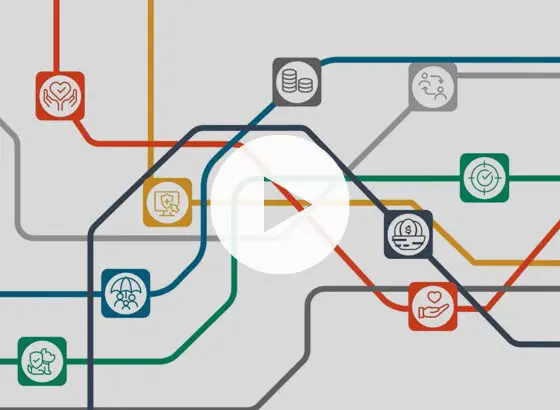
Simplify Benefits, Unlock HR’s Potential: bswift Has You Covered
Simplify benefits administration and empower HR with tools to streamline enrollment, optimize benefits use, and free HR for strategic work.
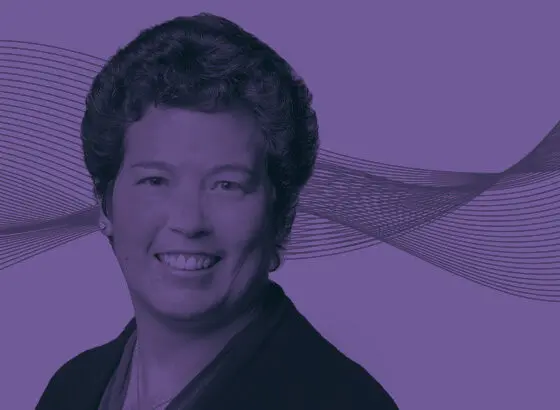
bWise – Ep 27: Streamlining Benefits Admin: Real-World Wisdom from Industry Vet Maria Yao
The latest episode of the bwise Podcast is a masterclass in optimizing operations. Tune in for Maria’s straight-shooting advice and elevate your operational capabilities.
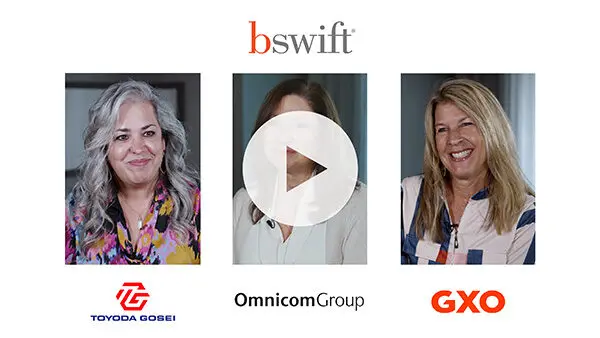
Flexible and User-Friendly: bswift Benefits Enrollment Solutions
Learn how bswift’s benefits administration platform streamlines HR’s work with flexible technology, seamless customization, and user-friendly tools to deliver benefits the way they’re meant to be.

bWise – Ep 26: Achieving Liftoff: Lana Hillebrand’s Journey From Astronaut Aspirations to HR Industry Leader
In this episode, hosts Don and Sharon sit down with HR and benefits administration leader Lana Hillebrand, who recently joined bswift’s advisory council.

bWise – Ep 25: Navigating the Future of Ben Admin: A Conversation With Scott Millson
On this episode, benefit administration insider Scott Millson shares his unique perspective on his over three decades in the employee benefits field.

Choosing Your Benefits with Ask Emma
Choosing Your Benefits with Ask Emma Video Transcript

bWise – Ep 24: Ice Baths to Client Service Excellence: A Conversation With bswift COO Amit Jain
Listen in as bswift Chief Operating Officer Amit Jain talks about his passion for client service, his unique approach to leadership, and his vision for the future of benefits administration technology.

bWise – Ep 23: Shaping Culture and Service: A People-First Approach to HR with bswift’s Natalie Atwood
bswift’s Chief People Officer Natalie Atwood talks with bWise hosts Don and Sharon about her passion for putting people first.
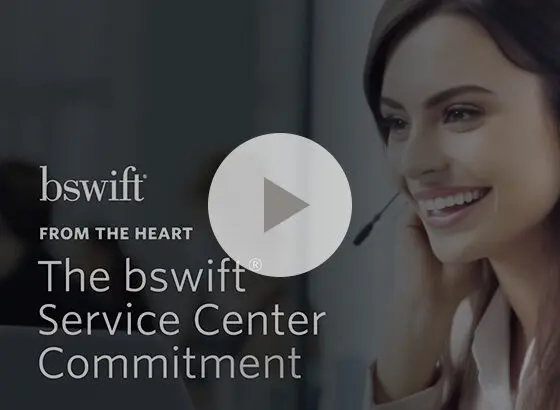
The bswift Service Center Commitment Video
Benefits can be difficult to understand. Watch this video to see how bswift's Service Center makes it simpler for employees.
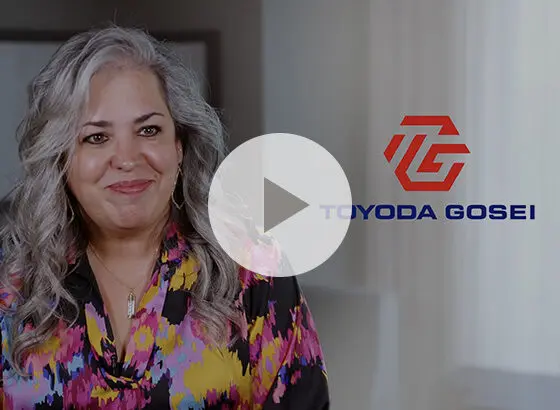
Toyoda Gosei Customer Story
Hear how bswift’s benefits tech stands out for its robust functionality, flexibility and dependability in managing complex benefits for a diverse workforce.

Unlocking the Power of Employee Benefits
Discover the hidden keys unlocking the full value of your benefits program for your employees and your organization. Watch it now!

bWise – Ep 20: Digital Transformation: HR and Employee Engagement, With NFP’s Mark Rieder
In this episode, we’ll explore how digital transformation can improve the employee experience, boost customer satisfaction, increase productivity, and drive greater profitability for the company.
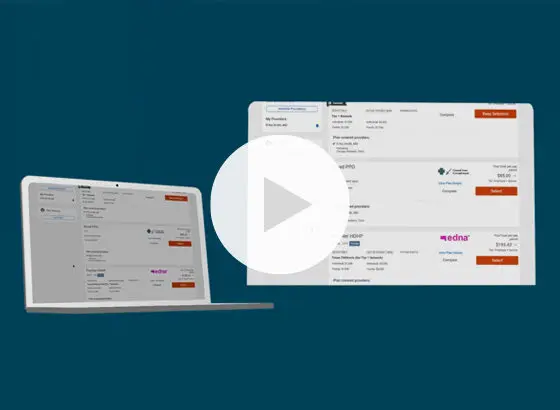
Fueling Outcomes: bswift’s Innovation Strategy and Latest Enhancements
Watch bswift's latest video to get up to date on bswift's latest innovation strategy and enhancements. Watch video now.

bWise – Ep 22: Driving Operational Excellence at bswift With Adam Hostetter
Get an insider’s look at how bswift’s Head of Operational Excellence, Adam Hostetter, is driving major improvements. Learn how his team is enhancing service delivery, upgrading technology, and aligning workstreams to accelerate growth.

ACA Management Suite
Introducing ACA Management Suite, offering a suite of management solutions to help employers navigate the new world of healthcare and benefits

bswift Dashboard and Reporting
The bswift Dashboard and Reporting tool provides easy access to the robust data you need in customizable reports, all in one location.

We are bswift
From innovation and data security to compassion and care, hear from our people about what makes us bswift.
